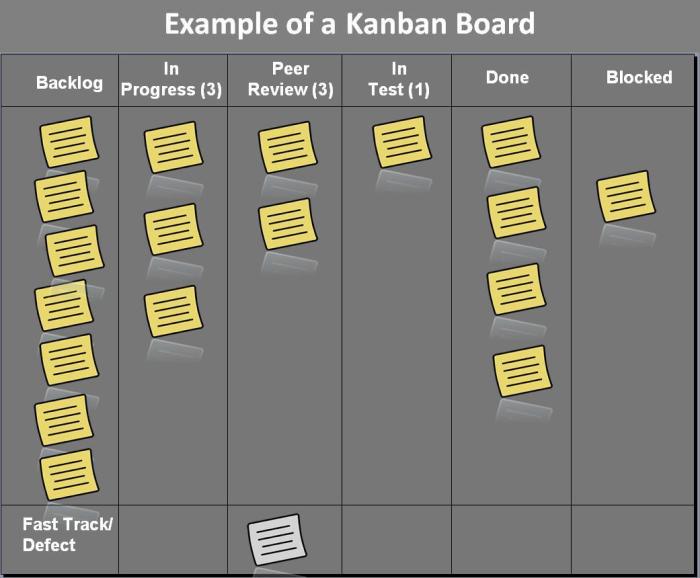
Board game Kickstarter 2025 is poised to revolutionize how we experience tabletop gaming, with innovative trends captivating the attention of enthusiasts and newcomers alike. As creators harness the power of crowdfunding, we can expect a surge in unique themes and engaging gameplay mechanics that cater to diverse audiences.
This year, the spotlight shines on the rise of immersive storytelling and interactive elements within board games, which not only enhance the gaming experience but also create a sense of community among players. With the popularity of different genres evolving, understanding the dynamics at play will be crucial for both creators and backers navigating this exciting landscape.
Board Game Trends in Kickstarter 2025
In 2025, the board game scene on Kickstarter is witnessing a vibrant evolution, shaped by shifts in gamer preferences, societal influences, and technological advancements. The platform has become a catalyst for innovative ideas and diverse themes, making it a hub for both new and seasoned players. As we explore the emerging trends, it becomes clear that the dynamic landscape of board gaming is not just about mechanics but also about the narratives and experiences that accompany them.The rise of specific genres can be attributed to a variety of factors, including cultural trends and community engagement.
Notably, the ongoing interest in cooperative gameplay and narrative-driven experiences reflects a collective desire for shared storytelling and collaboration in gameplay. These trends are not merely passing fads but represent a deeper connection players seek in their gaming experiences.
Popular Genres in 2025
Several genres are emerging as frontrunners in the Kickstarter board game space for 2025. These genres are not only attracting backers but also reshaping the gaming landscape.
- Cooperative Games: Games that emphasize teamwork are gaining traction. With titles like “Gloomhaven: The Next Chapter,” players appreciate the shared challenges and triumphs that come from working together towards common goals.
- Legacy and Campaign Games: These games, such as “Pandemic Legacy” and “Charterstone,” offer evolving narratives that change based on player decisions. They enhance replayability and personal investment, making them highly desirable among backers.
- Solo Play Options: The rise of solo players has prompted many designers to incorporate single-player modes, leading to experiences that cater specifically to individual gamers. Titles like “Under Falling Skies” demonstrate this trend effectively.
- Thematic Role-Playing Games: RPGs are increasingly featuring rich narratives and world-building elements. Games like “Tainted Grail: The Fall of Avalon” exemplify how thematic depth can enhance gameplay.
Evolving Thematic Elements
The thematic aspects of board games are evolving significantly, reflecting current social and cultural narratives. Themes that resonate with contemporary issues or popular culture are finding strong support on Kickstarter, as backers are drawn to games that tell compelling stories or engage with relevant topics.One notable shift is the integration of diverse narratives and inclusive themes. Many games are now embracing characters, settings, and stories that reflect a broader spectrum of experiences.
For instance, games like “Cascadia” celebrate ecological themes and promote environmental awareness through gameplay mechanics centered around nature.Additionally, the incorporation of technology is influencing thematic development. Games that utilize augmented reality (AR) or integrate digital elements into the physical gameplay are becoming more commonplace. These innovations allow for immersive experiences, such as “Chronicles of Crime,” which combines board gaming with app-based interactions for a hybrid experience.
As the board game community continues to evolve, the themes that resonate with players are increasingly reflective of their values and interests, bridging the gap between gaming and real-world experiences.
Successful Kickstarter Strategies for Board Games

Launching a board game on Kickstarter requires a blend of creativity, strategic planning, and community engagement. The right approach can significantly enhance your chances of success, as many creators have discovered. Understanding effective strategies can set your project apart in a crowded marketplace, leading to better funding outcomes.A well-thought-out campaign strategy is crucial for attracting backers and building excitement around your game.
This involves not only having a compelling product but also implementing marketing tactics that resonate with your target audience. Below, we Artikel several effective strategies and essential features that can elevate your Kickstarter page and ensure your campaign runs smoothly.
Effective Strategies for Launching a Board Game Campaign
To achieve a successful Kickstarter launch, it’s important to incorporate several key strategies. Here are some proven tactics that creators have used to garner interest and funding:
- Thorough Market Research: Understanding your audience and their preferences can guide your design and marketing decisions. Analyze successful campaigns in your niche to identify trends and popular themes.
- Build a Strong Prototype: A polished prototype showcases your game’s mechanics and artwork. High-quality images and videos can significantly enhance your campaign visibility.
- Set Realistic Funding Goals: Determine a funding goal that covers your costs but is also attainable. Too high, and you may scare off potential backers; too low, and you risk inadequate funding.
- Offer Compelling Rewards: Creating tiered reward levels can appeal to a wider range of potential backers. Include exclusive items or experiences that add value to your offerings.
Must-Have Features for an Appealing Kickstarter Page
A successful Kickstarter page needs to captivate visitors and encourage them to back your project. Here are essential features that should be included:
- Engaging Campaign Video: A short, high-quality video provides an overview of your game, showcases gameplay, and connects emotionally with potential backers.
- Clear Project Description: Use concise language to explain your game’s concept, mechanics, and what sets it apart from other projects.
- Visual Content: Include vibrant images and graphics that illustrate the game components, artwork, and gameplay experience. A visually appealing layout makes the page more engaging.
- Transparent Budget Breakdown: Share how funds will be allocated, making it clear to backers that their contributions will be used responsibly.
Importance of Community Engagement and Pre-Launch Marketing
Before launching, cultivating a community around your game can significantly impact your campaign’s success. Engaging potential backers early fosters a connection and builds anticipation.
- Social Media Presence: Use platforms like Twitter, Instagram, and Facebook to share updates, behind-the-scenes content, and engage with followers. Regular posting can create buzz and excitement.
- Join Board Game Communities: Engage in forums and groups dedicated to board games to gather feedback, share your project, and build relationships with passionate gamers.
- Email Marketing: Build an email list leading up to your launch. Share progress updates and exclusive previews to keep your audience informed and engaged.
- Pre-Launch Campaigns: Utilize landing pages or teaser campaigns to generate interest and collect email addresses before your Kickstarter goes live.
“Community engagement is the lifeblood of a successful Kickstarter campaign, turning casual observers into passionate backers.”
Comparative Analysis of Game Categories
The board game landscape on Kickstarter is diverse, with different game categories showcasing unique characteristics and funding strategies. Understanding the distinctions between these categories is crucial for creators aiming to maximize their campaign’s success. This analysis will delve into the contrasts between board games and card games, funding strategies for arcade games versus online games, and how role-playing games (RPGs) compete with video games on crowdfunding platforms.
Comparison of Board Games and Card Games
Board games and card games both appeal to tabletop enthusiasts, yet they differ significantly in gameplay mechanics, production costs, and backer engagement strategies.
- Game Mechanics: Board games typically involve a physical board and a variety of components such as tokens and dice, offering intricate gameplay. In contrast, card games rely heavily on decks and often emphasize strategy and player interaction.
- Production Costs: Producing board games generally incurs higher manufacturing costs due to the requirement for custom boards and components, which can complicate funding strategies. Card games usually have lower production costs, making them more accessible for smaller campaigns.
- Backer Engagement: Board game campaigns often create more elaborate stretch goals and expansions due to their complexity, fostering deeper engagement. Card games, with their streamlined nature, may focus more on unique art and thematic elements to attract backers.
Funding Strategies for Arcade Games and Online Games
Arcade games and online games adopt different funding strategies based on their target audiences and development processes.
- Target Audience: Arcade games often aim for nostalgia, appealing to those who grew up in the arcade era. This demographic can be effectively targeted through retro-themed campaigns. Online games focus on a broader audience, leveraging social media and influencer marketing to reach diverse player bases.
- Development Processes: Arcade games usually require substantial upfront investment in hardware and software development, which can lead to higher funding goals on Kickstarter. Online games benefit from the potential for ongoing development post-launch, allowing for incremental funding approaches.
- Community Engagement: Successful arcade game campaigns often promote local tournaments and community events to build excitement. Online games typically cultivate communities through forums and social media, encouraging backers to participate in the game’s ongoing evolution.
Performance of Role-Playing Games Against Video Games
Role-playing games (RPGs) and video games present unique challenges and opportunities on crowdfunding platforms, each appealing to distinct player preferences.
- Player Experience: RPGs emphasize storytelling and imagination, allowing players to shape their narratives. Video games offer immersive experiences through graphics and interactivity, often leading to higher production values. Campaigns for RPGs must highlight storytelling elements and community engagement, while video games focus on showcasing gameplay mechanics and visual appeal.
- Market Trends: RPGs have seen a resurgence in popularity, with successful campaigns like “Dungeons & Dragons” expansions capitalizing on community-driven content. Video games, however, often set higher funding expectations due to their extensive development costs, with successful campaigns like “Indie Game: The Movie” illustrating this trend.
- Funding Success Rates: RPGs generally have a loyal fanbase that supports niche projects, often leading to successful funding even at lower goals. In contrast, video game campaigns may require more extensive marketing efforts to stand out in a saturated market.
Understanding the nuances between game categories can significantly impact the success of Kickstarter campaigns.
Final Conclusion

As we delve into the world of Board game Kickstarter 2025, it’s evident that the fusion of creative strategies and community engagement will be vital for successful campaigns. With an ever-expanding array of thematic elements and gameplay styles, the future of board gaming looks bright, offering endless possibilities for innovation and connection among players.
Answers to Common Questions
What are the top trends for board games in 2025?
The top trends include immersive storytelling, interactive mechanics, and thematic diversity that cater to various player interests.
How can community engagement impact a Kickstarter campaign?
Engaging with the community can build excitement and trust, leading to increased support and backer retention throughout the campaign.
What features should be included on a successful Kickstarter page?
A successful Kickstarter page should have high-quality visuals, compelling storytelling, clear goals, and engaging rewards for backers.
How do board games compare to card games on Kickstarter?
Board games generally require more funding and elaborate components, while card games often have lower production costs and can reach audiences more quickly.
What funding strategies work best for arcade games versus online games?
Arcade games tend to focus on local community engagement and events, while online games benefit from global reach and digital marketing strategies.






